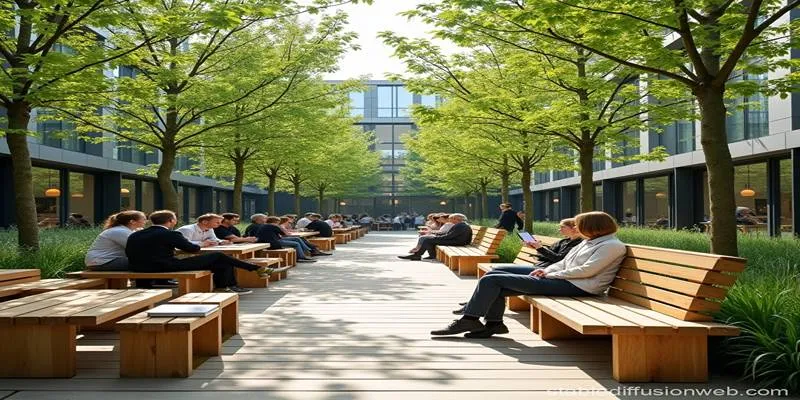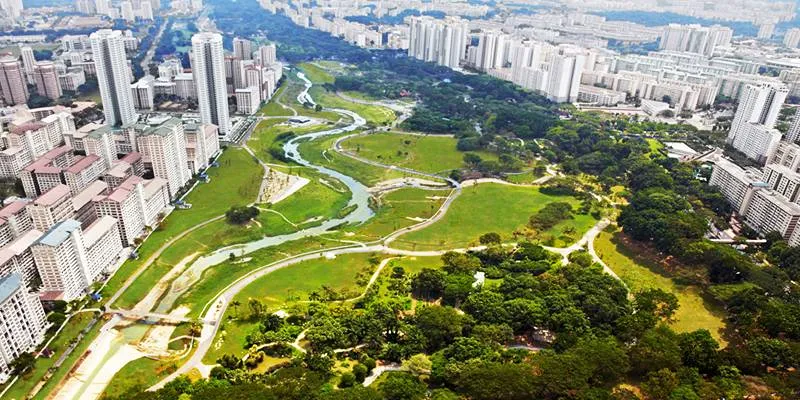Story: Berlin Streetscapes
Introduction
Berlin is a city of contrasts, where modern city planning intertwines with a rich historical tapestry. As you stroll through the streets, you’ll encounter an intriguing blend of architecture, open spaces, and vibrant street culture. From the iconic Brandenburg Gate to the bustling Alexanderplatz, Berlin’s streets narrate tales of its innovative future while whispering stories of its past.
This guide delves into the diverse elements of Berlin’s streetscapes, focusing on the city’s architecture, public spaces, street culture, and initiatives towards sustainable urban planning.
The Charm of Berlin’s Architecture
Berlin’s architecture is a testament to its lengthy and complex history. Neoclassical landmarks like the Brandenburg Gate juxtapose with modern marvels such as the Berlin Hauptbahnhof, offering a visual feast. The city’s beautifully restored historic buildings alongside contemporary architecture showcase Berlin’s ability to balance its past with its future.
The Reichstag , a symbol of German politics, epitomizes this blend. Its glass dome represents the city’s evolution from its historical roots to modernity. Similarly, the Berlin Cathedral, a magnificent baroque structure, stands surrounded by modern edifices, illustrating this architectural harmony.
Berlin boasts numerous notable buildings, including those influenced by the Bauhaus movement, particularly in areas like Mitte and Charlottenburg. These simple, functional structures, characterized by clean lines and practical design, contribute to the unique identity of Berlin’s streetscapes.
The Role of Public Spaces in Berlin

Public spaces are integral to Berlin’s streets. Parks, plazas, and pedestrian zones are not just places for leisure but vital components of the city’s social fabric. These areas foster community interaction and serve as hubs for locals and visitors to connect. The Tiergarten , Berlin’s vast central park, is a beloved destination, while Alexanderplatz buzzes with activity, offering shopping, socializing, and entertainment.
Berlin’s public spaces are designed to be both sustainable and enjoyable. Green roofs, urban gardens, and eco-friendly designs enhance the city’s livability and sustainability, integrating nature seamlessly into the urban environment.
The Diversity of Streets in Berlin
Berlin’s streetscapes are remarkable for their neighborhood diversity. Each area of the city boasts a distinct character, offering varied experiences for residents and visitors. From the upscale streets of Charlottenburg to the artistic, youthful vibe of Kreuzberg, Berlin’s streets are alive with energy and diversity.
In Kreuzberg , street art significantly defines the neighborhood’s identity. Murals and graffiti transform the streets into an open-air gallery, reflecting the city’s creative spirit. Meanwhile, neighborhoods like Prenzlauer Berg offer tree-lined streets with charming cafes and boutique shops, creating a more relaxed yet equally vibrant atmosphere.
This diversity extends beyond the physical appearance of the streets. Berlin’s multicultural population is mirrored in the variety of food, music, and cultural events found on its streets, fostering an inclusive environment that celebrates all cultures.
Berlin’s Street Culture
Street culture thrives in Berlin, with street performers, local markets, and festivals bringing the city to life. The Mauerpark Flea Market, held every Sunday, exemplifies how Berlin’s streets become convergence points for locals and tourists alike, offering a place to shop for unique items, enjoy live music, and soak up the vibrant atmosphere.
Berlin’s street culture is deeply rooted in its history. The Berlin Wall, once a symbol of division, has left an indelible mark on the city’s streets. The East Side Gallery, a preserved section of the Wall, serves as an open-air gallery that showcases paintings and murals reflecting the city’s past and its commitment to unity.
The spirit of freedom and individuality is central to Berlin’s street culture. People from diverse backgrounds express themselves through fashion, art, and music, creating a dynamic environment that encourages self-expression. Whether it’s a musician performing in front of the Berlin Cathedral or an impromptu dance show on the streets of Friedrichshain, Berlin’s streets are perpetually infused with creative energy.
The Importance of Sustainability in Urban Design

Sustainability is a core principle in the design of Berlin’s streets. The city is committed to minimizing its environmental impact through green spaces, efficient public transportation, and eco-friendly urban planning. Many of Berlin’s streets feature bicycle lanes and pedestrian zones, making it easier for people to navigate without relying on cars.
The city also prioritizes creating green spaces within urban areas. Many buildings are adorned with green roofs or vertical gardens, contributing to Berlin’s sustainability goals. Additionally, Berlin’s public transportation system, with its extensive bus, tram, and subway networks, is among the world’s best, helping to reduce traffic congestion and pollution.
Berlin’s focus on sustainability extends beyond environmental impact to creating a more livable and enjoyable urban environment. Green spaces, public transportation, and eco-friendly initiatives underscore Berlin’s commitment to valuing both people and the planet.
Berlin’s Streets: From Division to Unity
Berlin’s streetscapes have undergone significant transformations over the years. The city’s history—marked by division, conflict, and eventual reunification—has played a crucial role in shaping its urban landscape. Rebuilding after World War II, the erection of the Berlin Wall, and the city’s reunification have all contributed to the current form of Berlin’s streets.
Today, Berlin is a city where the old and new coexist harmoniously. While many historical landmarks have been preserved, new buildings, streets, and public spaces have been created, honoring Berlin’s past while embracing its vibrant future.
Conclusion
Berlin’s streets are more than just thoroughfares; they are a testament to the city’s culture, history, and vitality. With its diverse architecture, bustling street culture, and commitment to sustainability, Berlin’s streets are distinctively dynamic and exciting. As you walk through them, you can feel the city’s vibrancy. Each neighborhood, building, and public space tells a story, defining the essence of Berlin. Whether you’re a Berliner or a visitor, the city’s streets are bound to leave a lasting impression.